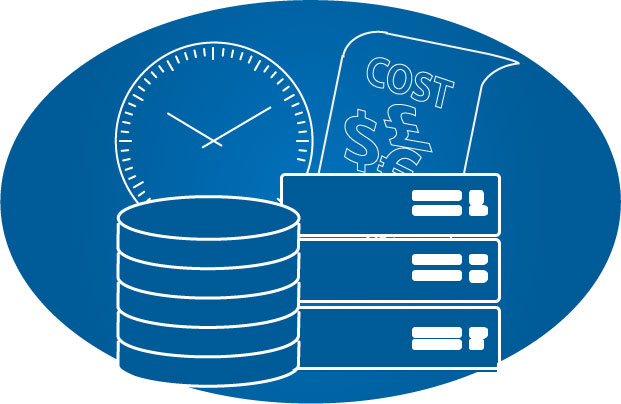
Disaster recovery has become a top priority for data centers due to lockdown orders that have pushed interaction for much of the global workforce and the majority of students online.
According to Gartner, downtime costs an average of $5,600 per minute. This can result in $140,000 to $540,00 per hour depending on several factors including the organization itself, the industry, the number of people impacted, time of day and, of course, the duration of the downtime. It likely comes as no surprise that losses tend to be significantly higher for organizations that deal with large quantities of data transactions.
There are additional intangible costs of downtime as well. A study by UC Irvine reports that workers report it takes more than 20 minutes to refocus after an interruption. That does not even include the time it takes to address the problem. Workers also report “significantly higher stress, frustration, workload, effort, and pressure” because of these interruptions. For IT managers juggling so many responsibilities, this is simply not acceptable.
When management understands the potential impacts and costs to the organization, they can better evaluate disaster recovery plans and preventative investments that need to be made.
Disruption is a Pervasive Problem
The pandemic is not entirely to blame. According to the Uptime Institute, prior to the pandemic, failures and downtime were not just common, but on the rise.
In 2019, Uptime found that “almost one-third of data center owners and operators experienced a downtime incident or severe degradation of service in the past year, and half in the previous three years. Many of these incidents had severe financial consequences, with 10% of the 2019 respondents reporting that their most recent incident cost more than $1 million.”
Many believe that the number of outages and the associated costs are increasing because of the increased reliance and responsibilities placed on IT managers today. In short, they are simply expected to monitor and handle too many things.
Uptime’s survey data shows that failures are caused most often (33%) by loss of on-site power. The next two most common causes were network failure (30%) and IT or software errors (28%).
Because data centers are supporting unusually large spikes in internet traffic, taking preventative action against downtime and the significant related costs is critical.
The Solution
A good data protection plan backs up all the information that an organization might need to restore in order to maintain business continuity. But the first step is to prevent disaster from happening in the first place.
Data center infrastructure management (DCIM) tools help with this preventative effort by providing IT managers with powerful data center visualization tools which enable line-of-sight to intelligent data center diagrams that accurately reflect the IT environment. This includes the following:
- Heat maps that identify hot spots: at-a-glance visibility collects information about air temperature and humidity from environmental sensors within your data center. This information allows managers to properly balance energy efficiency with the safety of their equipment.
- Data center layouts: as managers seek to limit capital expenses and make the most of their existing real estate, space can easily become overloaded. By efficiently mapping out buildings, rooms and individual racks before reorganizing resources, managers can prevent failures and save times, cost, energy, and space.
- Proactive power monitoring: ensuring the operational health of servers and connectivity is critical in sustaining uptime and preventing outages. Because equipment failure can go undetected, polling equipment at regular customizable intervals is important to ensure they remain operational. With DCIM, when equipment experiences an accessibility interruption, managers are alerted and can rectify the situation.
With Device42, companies can use DCIM to avoid outages, downtime and the significant tangible and intangible costs that they cause. If you need a fast way to augment your disaster recovery efforts before your next outage, we can help you rapidly improve your posture. If you’re interested, download our 30-day free trial today.



